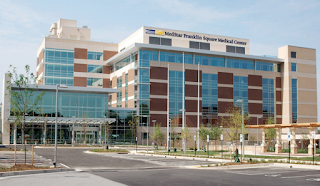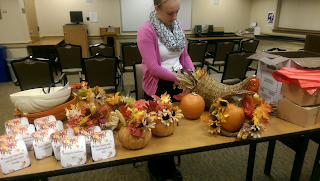Our
internship director, Phyllis, works with FSNE to educate low-income seniors in
a senior housing apartment building. In
several class days so far, we have learned about how to tailor a curriculum to
the audience of a presentation. In this
case, it is extra important to have an engaging and fun presentation since
otherwise people will choose not to come back!
 On our first visit, we were helping
out with a class about how to garden at home. The goal was to teach them easy
ways to grow fresh fruits, veggies, and herbs in their apartments, with limited
budget and space. On an earlier week,
they had started seeds in a moist cotton ball in each finger of a plastic glove
(center of the photo), which is a simple way to keep them wet until they begin
to sprout.
On our first visit, we were helping
out with a class about how to garden at home. The goal was to teach them easy
ways to grow fresh fruits, veggies, and herbs in their apartments, with limited
budget and space. On an earlier week,
they had started seeds in a moist cotton ball in each finger of a plastic glove
(center of the photo), which is a simple way to keep them wet until they begin
to sprout. On the day we visited, we helped them pick the largest sprouts and transplant them into pots. This was a really fun way to help them feel like an active participant and give them something they can keep in their apartment in the future. Turnip seeds were the most popular plant, but we also had beets, lettuce, basil, and parsley available for those who had missed the earlier class and still wanted to garden. After we interns helped clean up the soil on the tables, we moved on to the nutrition education piece. There was a lesson on how to keep the plants in sunlight, when to pick them, and how to cook with them. A few very proudly showed us their flourishing basil plants! We handed out a sample of pasta with basil so they could see how to use spices to increase the flavor and palatability of their home cooking without adding a lot of salt.
On another day, we went back
to introduce them to new ways to add fruit into their diet. The attendees gathered around six tables, with an intern or two at each table to
socialize and answer any questions.
Phyllis talked for a bit about how to eat different types of fruits, and
how they could be mixed with yogurt also.
 |
| Photo is blurred for privacy reasons |
- Maria Pittarelli
follow me on twitter @beyondlettuce











